-
Sector Report for Monday, 13 June 2011: Infrastructure protection
This report contains the following stories.
-
-
Fate of chemical security bill uncertain
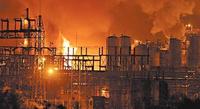
Late last month the House Energy and Commerce Committee approved legislation to extend federal regulations designed to keep chemical plants safe from terrorist attacks, but the bill’s ultimate passage is far from guaranteed; the bill that was recently passed is one of two competing House proposal — the proposals each envisions a different congressional panel monitoring chemical plant safety — and it is unclear which will make it to the floor for debate; in addition, many Democrats and some northeastern Republicans want the extension of the bill to be tied to toughening its language; further to examine what DHS is doing to secure the U.S. chemical facilities from terrorist attack, ASIS is hosting a panel on the Chemical Facility Anti-Terrorism Standards (CFATS) at ASIS annual conference in Orlando, Florida
-
-
Larry Summers calls for $100 billion in infrastructure spending
A former chief White House economic advisor is urging lawmakers to approve $100 billion in additional infrastructure spending to help boost the economy and prevent stagnation; Larry Summers, the former director of the White House National Economic Council for President Obama, wrote that it would be “premature” to limit fiscal support for the economy at the end of 2011
-
-
Truckers push for more highway spending
Last month truckers pushed Congress to increase investments to America’s highway system noting that cargo shipped by trucks was expected to increase sharply over the next decade; the American Trucking Association (ATA) recently predicted that by 2022, there will be an overall increase of 24 percent in freight transportation; of that 24 percent, the trucking industry will see its cargo load increase by 70 percent.
-
-
Montana floods cause $8.6 million in damage to infrastructure
Towns in Montana have been hit particularly hard by floods, causing an estimated $8.6 million in damage to public infrastructure; officials expect that figure to increase in the coming weeks as flooding will continue for some time
-
-
New concrete could increase life of bridges by forty years
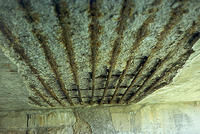
Researchers have developed a new type of concrete that could increase the lifespan of bridges by more than forty years compared to normal strength concrete; the more durable type of concrete minimizes shrinkage, a problem typically found in high-strength concrete; the new concrete is also less likely to crack, which reduces the ability for corrosive materials like chlorides from de-icing salts to seep into the bridge’s internal structure; the new concrete uses a lightweight porous type of sand
-
-
Pakistan charges India with "water terrorism"
India is building dams on three major rivers flowing from the India to Pakistan; an editorial in a leading Pakistani newspaper says that India’s goal is “[to make] Pakistan totally barren,” and that India’s actions amount to water terrorism
-
-
"Melt-through" at Fukushima nuclear plant
Japan has admitted that molten nuclear fuel in three reactors at the Fukushima Daiichi power plant has burned through pressure vessels, not just the reactors’ cores — creating a “melt-through,” which is a more serious problem than a melt down
-
-
Grids complicate Germany’s nuke exit
Chancellor Angela Merkel faces a daunting challenge as her cabinet must implement a plan that replaces 23 percent of the nation’s energy output as nuclear power plants are phased out; to successfully end its nuclear energy program with minimal disruptions, Germany must first build a $14.4 billion expansion of its electrical grid; electrical cables are needed to bring energy generated from offshore wind farms in the north to its manufacturing centers in the south; in addition, high-volume lines stretching to France must be built to allow for energy imports to cover any shortfalls; but Germans have long been opposed the building of new overhead power lines; the country must construct as much as 2,235 miles of cables by 2020
-
-
New tech taps Earth's deep heat
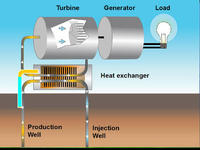
Established methods for transforming Earth’s heat into electricity involve extracting hot water from rock formations several hundred feet from the Earth’s surface at the few natural hot spots around the world, then using the hot water to turn power-producing turbines; University of Minnesota researchers developed a new system — CO2-plume geothermal system, or CPG — which uses high-pressure CO2 instead of water as the underground heat-carrying fluid; the method is expected not only to produce renewable electricity far more efficiently than conventional geothermal systems, but also help reduce atmospheric carbon dioxide (CO2) — dealing a one-two punch against climate change
-
-
Virtual water would not remedy global fresh water shortage
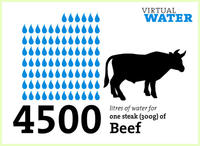
More than 80 percent of humanity currently lives in regions where water security is threatened, meaning that as the global population grows against a finite volume of freshwater, a more equal distribution of water use between countries will be needed; virtual water — that is, the amount of water it takes to produce goods or a service — has been suggested as a possible solution to this growing problem by using virtual water values to inform international trade deals; a new study suggests that it may not be as revolutionary as first thought
-
-
Iran pushes ahead with nuke plans, despite seismic warnings
Iranian officials have chosen to ignore the warnings of top scientists and continue with the construction of nuclear facilities near earthquake prone regions; according to an official with the International Atomic Energy Agency, in a top level meeting Iran’s leaders recently decided to move ahead with plans to construct nuclear facilities, despite Iranian scientists’ warnings that “data collected since the year 2000 shows the incontrovertible risks of establishing nuclear sites in the proximity of fault lines’ in Khuzestan as well as nineteen other Iranian provinces; Iran is one of the most seismically active countries in the world with major fault lines covering at least 90 percent of it
-
-
Climate change and cities: a wake-up call
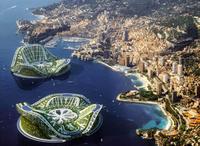
More than half the world’s population live in cities, many of which are increasingly vulnerable to the impacts of climate change; cities, however, are also emerging as the innovative “first responders” in dealing with climate change; climate change will stress cities in many ways — there will be more heat waves, threatening the health of the elderly and infirm; droughts will also become more commonplace in many cities, while in coastal communities too much water may be the problem, due to sea-level rise and more extreme coastal flooding
-
-
Bacteria designed for sleuthing
Seven Cambridge University undergraduates spent the summer of 2009 genetically engineering bacteria to secrete a variety of colored pigments, visible to the naked eye; they designed standardized sequences of DNA, known as BioBricks, and inserted them into E. coli bacteria — so the bacteria can now change its color to red, yellow, green, blue, brown, or violet; the bacteria can be programmed to do useful things, such as indicate whether drinking water is safe by turning red if they sense a toxin; other uses for the design bacterium include monitoring food additives, patenting issues, personalized medicine, terrorism, and new types of weather
-
-
QinetiQ's OptaSense to protect India's major oil pipeline
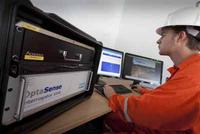
The 670 km Mangala Development Pipeline (MDP) is the world’s longest continuously heated and insulated pipeline; it will have access to 75 percent of India’s refining capacity; the company operating it will install QinetiQ’s OptaSense technology to secure the pipeline; OptaSense system is designed to detect, classify, and locate potential threats to buried pipelines
-
More headlines
The long view
Water Wars: A Historic Agreement Between Mexico and US Is Ramping Up Border Tension
As climate change drives rising temperatures and changes in rainfall, Mexico and the US are in the middle of a conflict over water, putting an additional strain on their relationship. Partly due to constant droughts, Mexico has struggled to maintain its water deliveries for much of the last 25 years, deliveries to which it is obligated by a 1944 water-sharing agreement between the two countries.
Trump Is Fast-Tracking New Coal Mines — Even When They Don’t Make Economic Sense
In Appalachian Tennessee, mines shut down and couldn’t pay their debts. Now a new one is opening under the guise of an “energy emergency.”
Smaller Nuclear Reactors Spark Renewed Interest in a Once-Shunned Energy Source
In the past two years, half the states have taken action to promote nuclear power, from creating nuclear task forces to integrating nuclear into long-term energy plans.
Keeping the Lights on with Nuclear Waste: Radiochemistry Transforms Nuclear Waste into Strategic Materials
How UNLV radiochemistry is pioneering the future of energy in the Southwest by salvaging strategic materials from nuclear dumps –and making it safe.
Model Predicts Long-Term Effects of Nuclear Waste on Underground Disposal Systems
The simulations matched results from an underground lab experiment in Switzerland, suggesting modeling could be used to validate the safety of nuclear disposal sites.
